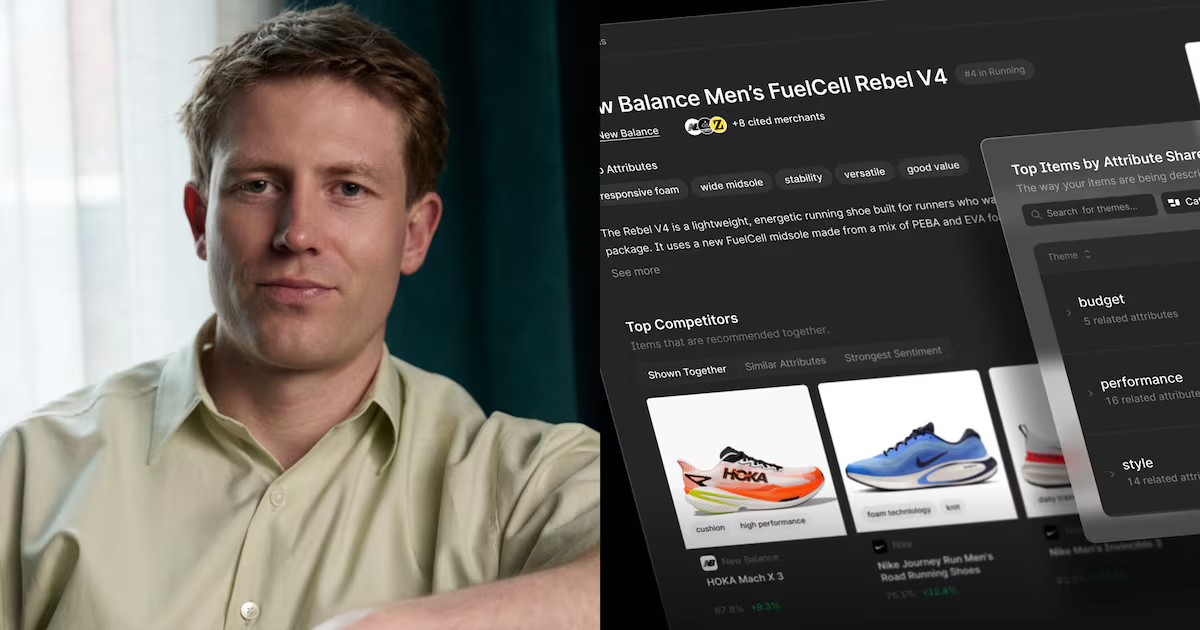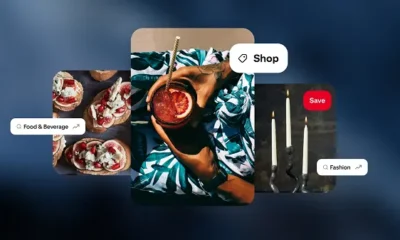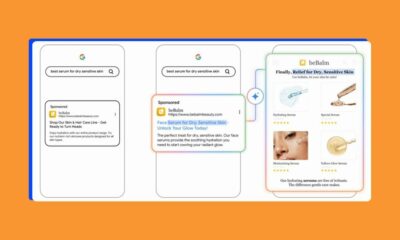MARKETING
Influencer Marketing Strategy Checklist & Template

If you’re a marketer looking to reach new audiences, partnering with influencers can be a great way to do that.
Influencer marketing is an incredibly effective strategy. Nearly 3.96 million of the world’s population is using social media, and researchers say that number might reach 4.41 million by 2025.
As a result, influencer marketing has naturally become one of the most popular marketing methods. As target markets become younger and more digitally connected, influencers can help organizations connect with consumers where they are – online.
What is Influencer Marketing Strategy?
Influencer marketing is a strategy where businesses rely on an influential leader to recommend their product to their target audience. These leaders usually have a large social following or captivate a market segment.
By building influencer relationships, brands can leverage an influencer’s reach to achieve their marketing goals.
But if you’re considering hiring an influencer for your brand, where do you even begin? It can be tricky to narrow down your goals, what type of influencer you want, and what goals you hope to meet with an influencer strategy.
To help you narrow your search and ensure your influencer marketing strategy is as effective as possible, we’ve created a template and guidelines to help get you started.
Follow Along With Our Free Influencer Guide + Templates
Influencer Collaboration
Influencer collaboration is a marketing strategy that involves paying individuals with a large social media following to advertise your brand to their followers. The influencer can demand compensation in monetary value or complimentary products and services in exchange for their recommendation.
According to Influencer Marketing Hub, 90% of marketers will allocate a budget to influencer marketing, with 62% increasing their existing budget. The same study also cites that most brands that have worked with influencers are pleased with their results based on conversion rates and sales they received as part of the collaboration.
The good news is even companies that hired micro-influencers (that is, influencers with 15K followers and fewer) still got impressive results.
According to Convince and Convert, the top 13% of marketers are getting great returns from influencer collaboration regarding quantifiable results.
In fact, for every $1 spent on influencer marketing, they’re getting $20 or more. This explains why marketers are increasing their influencer marketing budgets.
Influencer Marketing Strategy Checklist
- Define your goals.
- Identify and define your audience.
- Define your budget.
- Choose a type of campaign.
- Decide on the social media platform you want to use.
- Create content for your campaign.
- Find your brand influencers.
- Promote your campaign.
- Track your success.
Here are six steps to help you create and implement an influencer marketing strategy:
1. Define your goals.
By clearly defining the end goal of your strategy, you can work your way backward to determine the steps needed to get there. Using your goals as guiding lights will also define your strategy’s metrics for success. These will help keep your campaign on track.
Are you trying to increase brand awareness or drive engagement? Do you want to spruce up your lead generation method, or do you want to build on the loyalty and goodwill of your existing audience?
Dunkin Donuts is an excellent example of how defining your goals can influence your results. They hired Charli D’amelio to advertise their products to increase their app downloads.
After her video went viral, they launched a drink named after her, “The Charli,” and her 143 million Tiktok followers were more than willing to join in the trend. As a result, the app’s download increased by 57% when Dunkin Donuts released the drink.
2. Identify and define your audience.
Properly segmenting and identifying your audience can determine the effectiveness and success of your influencer campaign. It’ll be easier to identify which audiences would best help your marketing goals once you define them.
Depending on your organization’s target personas or ideal buyer, you should group consumers by demographics, psychographics, buyer lifecycle stage, or preferred channel.
Tinder is an excellent example of how your target audience can influence your campaign. Most of their app users are 18-25 years old, so they hired influencers in this age bracket to promote their app.
Tayler Holder was one of the influencers who participated in the campaign, and one of his posts has over 500k likes. It’s just a photo of him wearing a Tinder-branded shirt and a short caption, “Swipe right and come find us on @tinder.”
3. Define your budget.
Defining your budget is essential s because it guides your content creation and distribution options.For example, if you’re on a limited budget, you may opt to use an independent influencer instead of an agency.
This is also a good time to decide how you compensate your influencers. Some influencers are okay with being paid using free products and services.
Every influencer marketing campaign is different depending on the means of payment and the resources required for the campaign. Here is an example of how you can break down your marketing campaign budget:

4. Choose a type of campaign.
The way you promote your brand through an influencer depends on your goals and the target audience’s preferences.
Guest posting, sponsored content, re-targeting, co-creation, competitions, mentions on social, discount codes, and more are terrific examples of influencer marketing campaigns.
For example, Audible partnered with best-selling author Tim Ferriss on his podcast, where his listeners could use his custom link to get a discount on Audible content. This partnership delivered a relevant offer to the target audience, benefitting Audible, Tim Ferriss, and his podcast listeners.
5. Decide on the social media platform you want to use.
One good thing that happened during the pandemic is that the usage of all social media platforms went on the rise. Marketers’ most used social media platform as of last year is Facebook, and the least used is Snapchat.
That being said, the best platform is based on your target market and the kind of content you’re promoting.
For example, if you’re promoting something for teens, Snapchat would still be your best platform. This chart from WordStream will give you more clarity.
6. Create content for your campaign.
Once you’ve decided on the medium and campaign type, it’s time to create compelling content. Even if you have the most exciting campaign or best product-market fit, consumers will lose interest if your messaging or content doesn’t captivate them.
Make it as easy as possible for your influencer to share your message. The better your messaging fits with their audience, the easier it is for your influencer to push your brand out to their audience.
For example, Fitplan targets people working out from home who might need professional training to reach their body goals. To increase their app sign-up, they work with influencers already sharing fitness content with their audience, like Michele Win.
In return, when their followers sign up for the app, the influencers get to train them and earn money from the app. This strategy works because the content aligns with the users’ needs, and they can see what to expect. It’s also easy for the influencers to push this message because they simply share the same message with their followers.
7. Find your brand influencers.
The right influencer should understand and connect with your audience, your brand, and the content you’re promoting. For example, if you’re promoting supplements, you have a better chance with influencers who are into health and fitness than influencers who are mainly interested in new fashion trends.
You can get influencers in your niche by using hashtags on social media platforms. For example, by simply searching #fitness on IG, you get over 1 million posts from different fitness influencers.
Sometimes, you don’t have to work with an influencer in your niche but rather someone who is trending. Your marketing team can help identify the best influencers for your brand by staying on top of their social media game.
8. Promote your campaign.
Once you’ve successfully identified your target market, found your ideal influencer, and created compelling content, all that’s left is promoting your new partnership!
Go to your favorite social channels or draft a blog post to generate some buzz.
For example, Fitplan shares short workout advice videos by their influencers on their IG page. This is a good way to encourage viewers to sign up by giving them a glimpse of what happens in their program. Sharing the content on their page also helps reach the people who might not be following their influencers.
9. Track your success.
It’s critical to track the performance of your partnership to ensure all expectations are met and determine the success of the campaign.
Track website traffic, engagement, conversions, or other metrics you decided on when you determined your marketing goals. You can agree to check the data weekly, monthly or quarterly depending on the nature of your campaign. Check in with your original goals to analyze your success and how to repeat them.
There’s a lot of potential for high return on investment (ROI) from influencer partnerships. Therefore, tracking if and how your influencer content performs better than your non-influencer content is essential.

The Influencer Contract Checklist
An influencer contract is a document that contains the details of the agreement between the influencer and a business. For example, the contract includes the terms of content creation, legal protection for both parties, and compensation received, among other details.
It’s important to have a contract to keep the influencers you’re working with accountable, and it’s always a brilliant idea to have a legal document where money is involved.
1. The Basics
This includes the date your contract begins and both parties’ official names. It’s important to ensure the names that appear in the contract are official and acceptable in a court of law.
Use simple language to describe everything in this section to avoid any kind of misinterpretation in the future.
2. The Expiry Date
How long will you be working with the influencer for this particular campaign? However short or long it may be, stating the dates is essential.
This section should state whether it’s a one-time campaign and, if not, the terms of renewing the contract. For example, you can set your influencer’s contract to one year, with the option of renewing it based on the parties’ agreement.
3. The Mode of Compensation
What will you be offering the influencer in exchange for their services? It could be monetary or a free product or service.
Regardless of what you’ll offer, ensure you state it clearly. How much will you be offering if it’s money and after how long?
For example, your terms could state that you’ll pay the contractor 30 days after sending their invoice.
The payment structure will vary from one agreement to another. For example, if it’s a one-time campaign, you could agree on paying half the money before the campaign and the rest after the influencer hits their key performance indicator (KPI).
4. Your Inclusion in the Campaign
Content distribution is just one of the main parts of an influencer marketing campaign. There are other vital parts, like creating content and deciding on the best tone for the campaign.
An influencer better understands the kind of content that resonates with their audience and creative ways to present it.
Therefore, it’s good to include the influencer in the creative briefing sessions. In this case, you’ll need to state how many meetings they’ll be expected to attend and for how long.
5. The Type of Content
What kind of content are you expecting from the influencer? Is it a guest post, a vlog, or a reel? State the expectations clearly.
If you’re expecting multiple content formats, mention exactly how they should be delivered. For example, you could state you need four reels and four social media posts twice a week.
7. The Approval Process
As we mentioned, a marketing influencer campaign works best when the influencer collaborates with the marketing team. This helps with quality control by ensuring the influencer adheres to company values.
In some instances, the marketing team may have some suggestions for or edits to the content before posting. Ensure you mention how many revision rounds the influencer should expect to make and if revisions guarantee extra pay.
8. The Promotion Requirements
How much do you want the influencer to be involved in the marketing process? For example, do you want them to share the content on their personal pages? If yes, what platforms and how often?
State these expectations, including how much they should engage with the audience to avoid any conflicts in the future.
9. The Content Copyright
If you want the right to edit or modify the influencer’s content, it’s important to include content copyright in the contract. Your copyright terms should also allow you to use their images or logo when posting related content.
On the other hand, the influencer might want access to the content they edit. If this is the case, be sure to mention how long they’re allowed to access the content. When can they access the content and do they retain the copyright forever?
10. The Publication Agreement
A publication agreement details when the influencer will publish the content. Do you publish once, twice a week, or several times a day?
Ensure you capture all these details on your contract and include any penalties the influencer will face if they don’t comply.
Include other additions the influencer must make to the content when uploading it. These may consist of promo codes, hashtags, or tracking links.
11. A Restrictive Covenant
A restrictive covenant is an agreement on the length of time an influencer isn’t allowed to work with a competitor after the campaign. So first, define your competitors and include them in the contract.
Additionally, ask the influencer to confirm that they have no written contracts with your competitors.
12. A Sunset Clause
A sunset clause dictates the length of time your sponsored content should appear on the influencer’s pages. Without a definite period, many influencers can delete the sponsored content once they’ve been paid or after a short period.
Be clear on how long the content should stay on the influencer’s page before they can delete it.
13. A Cancellation Clause
What happens if the influencer feels you’re no longer a good fit for their audience? Or they break the agreement, and you can no longer continue working with them?
Prepare for these scenarios by having a cancellation clause in place. It should cover any penalties or repayment.
14. Image Authenticity
Image manipulation isn’t a new concept– especially with the editing apps and filters available on the market. Ensure you have a clause that protects you from image manipulation.
While you want your products to appear appealing, you also want to ensure customers don’t feel cheated when they receive your product.
Image manipulation may also trigger publishers to flag your ad for false advertising. Publishers could then remove your content or your ad campaign from their platform.
15. A Morality Clause
You can’t control what an influencer does, but you can protect yourself with a morality clause. Remember, how they conduct themselves during the campaign can damage your brand’s reputation by association.
Therefore, some guidelines can protect you, like discontinuing the contract when they conduct themselves in any way that puts your brand at risk.
Once you have an influencer marketing strategy and a contract, you’ll need to create an influencer proposal to send to potential collaborators.
Here’s a short influencer proposal checklist:
The Influencer Proposal Checklist
- State your goals.
- Show visual examples.
- Simplify the numbers.
- State the responsibilities of the influencers.
- Give examples of influencers you’d like to work with.
- Don’t be too detailed.
1. State your goals.
What do you want to achieve with this influencer marketing campaign? It could be better brand awareness, increased subscription rates, high traffic, or high engagement.
Whatever your goal is, it should be stated clearly in your presentation.
2. Show visual examples.
Influencer marketing is mainly about visuals. So, before you meet with an influencer, research and take screenshots of the campaigns you like.
These resources will give your influencer an idea of what kind of content you’re looking for.
3. Simplify the numbers.
If you love data, chances are your proposal will be full of figures. This is boring, and most influencers will not pay attention to this presentation. Provide only the necessary data based on the influencer’s preference to avoid overcomplicating the proposal. The metrics you share will depend on the media platform you’re working on. For example, if you’re promoting IG content, your influencer will need to see the content interactions, profile activity, and the accounts your posts are reaching. This information is important when setting future goals and negotiating prices.
Also, try to replace the data and tables with graphics that appeal to them based on their interests and the nature of their career. Keep in mind that successful influencers are heavily booked and you also need to wow them to work with you.
4. State the responsibilities of the influencers.
State all of the influencer’s responsibilities. How should the influencers participate in the marketing campaign?
Responsibilities can include creating content, developing hashtags, editing images, or sharing content on their page.
5. Give examples of influencers you’d like to work with.
If you don’t have specific names in mind, you can create a buyer’s persona to represent the kind of people you want to collaborate with. You can boost this persona with success metrics like followers, engagement, and likes.
Coming up with this persona will help your potential influencers know your priorities in this campaign.
6. Don’t be too detailed.
Although you want to ensure your collaborators understand your expectations , you don’t want to micromanage them.
Instead, include a brief. This allows the influencer to share ideas on how to reach your goals.
Download the Influencer Strategy Template
Are you ready to try these influencer marketing strategies with your organization? Download our free influencer strategy template and achieve your marketing goals today.
Editor’s note: This post was originally published in August 2019 and has been updated for comprehensiveness.


















You must be logged in to post a comment Login